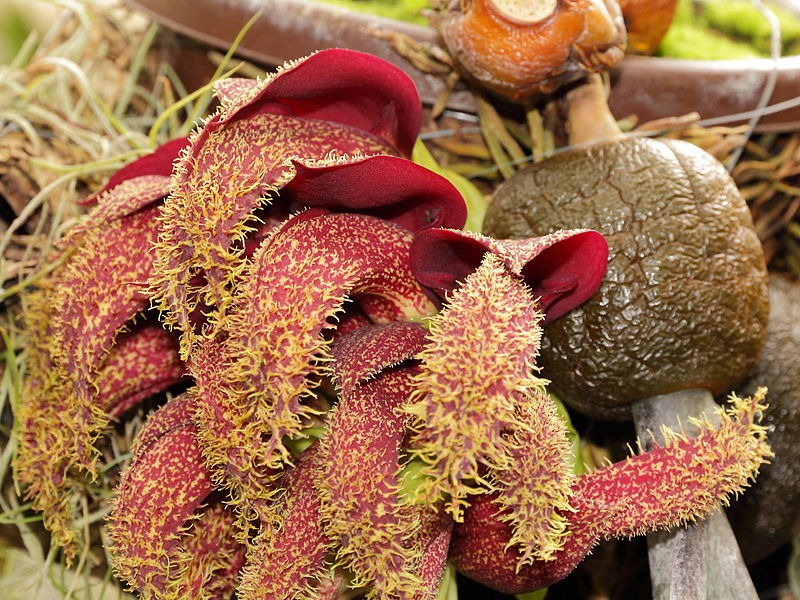
Bulbophyllum phalaenopsis Facts
- First of all, the bizarre appearance of the unique Bulbophyllum phalaenopsis conceals a truly surprising fact. That’s because this visually unappealing plant with no common name actually constitutes a type of orchid.
- Further, the astonishing species also sets itself apart from related plants in yet another disturbing fashion. That distinction occurs due to a rather unusual fact. That’s because it also ranks as the worst smelling of all known orchids.
- In addition, it inhabits a highly restricted and remote region. As a result, few people know of its existence. However, despite the inherent dangers of a small range, the IUCN currently does not have a listing for it on the Red List.
- Finally, it also faces several threats to its continued existence. Obviously, its comparatively tiny habitat range only serves to augment these. Its major threats include the same as many other species, climate change and habitat loss.
Related Articles
Bulbophyllum phalaenopsis Physical Description
Firstly, the truly incredible Bulbophyllum phalaenopsis distinguishes itself in yet another way from others of its kind. That’s because the plant attains a truly impressive size for an orchid. In fact, it ranks as one of the largest of all known varieties.
But, that size does not apply in the vertical sense. Most individuals specimens only reach a height of about 12 in (30 cm). However, its remarkable leaves often achieve a length of roughly 4 ft (1.22 m). These, therefore, drape along the ground in the wild, or drape down if the plant is hung above the ground.
Furthermore, its flowers typically appear in relatively large clusters. These impressive groupings typically reach a length of about 2.4 in (6.2 cm), and display parallel sepals. Each usually shows a purplish-red color with yellow spots, and a covering of dense hairs.
- Kingdom: Plantae
- Phylum: Angiosperms
- Class: Monocots
- Order: Asparagales
- Family: Orchidaceae
- Genus: Bulbophyllum
- Species: B. phalaenopsis
Bulbophyllum phalaenopsis Distribution, Habitat, and Ecology
Most notably, the startling, yet sincerely fascinating Bulbophyllum phalaenopsis only appears in Nature in on isolated area of the world. That particular region consists solely of Papua, New Guinea, near Australia.
Additionally, the amazing plant only naturally inhabits a particular portion of the rather large island. That limited area consists only of sections of lowland forests, at elevations of no more than 1,640 ft (500 m).
Also, like some other types of orchids, this unforgettable variety blooms not just once per season, but year round. But perhaps its most notable feature remains its powerful odor, often compared to the stench of rotting meat.
This unpleasant odor, however, serves a useful purpose in Nature. That’s because it serves to attract copious numbers of a specific type of insect. Unlike many flowers, the Bulbophyllum phalaenopsis is pollinated by carrion flies, instead of bees.
Species Sharing Its Range
Check out our other articles on Earth’s Many Mesmerizing Cephalopods, Korean Fir, Lonar Lake, Bleeding Tooth Fungus, Visayan Spotted Deer, Little Penguin, Giant Huntsman Spider, Green Iguana
